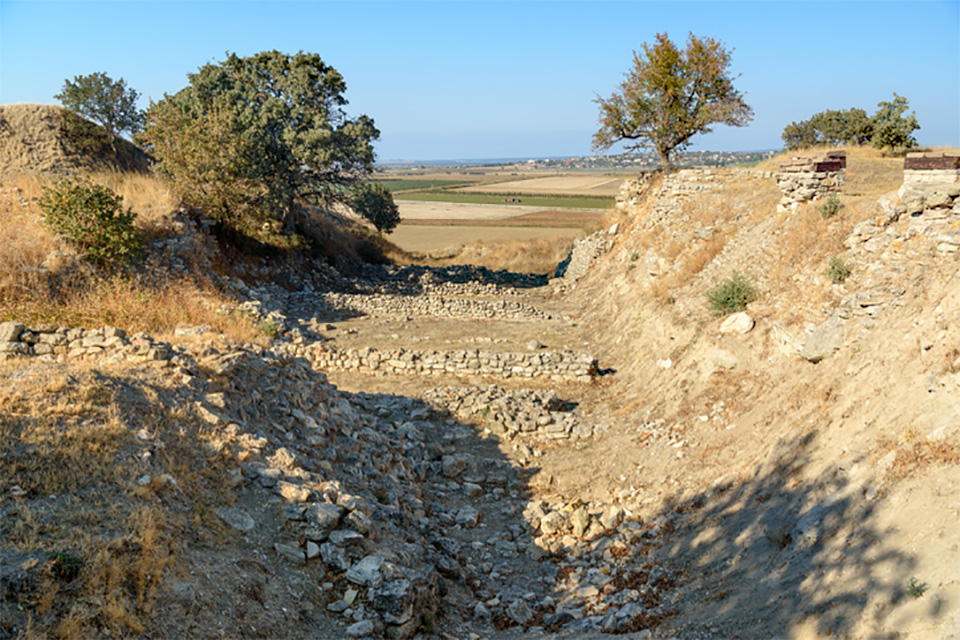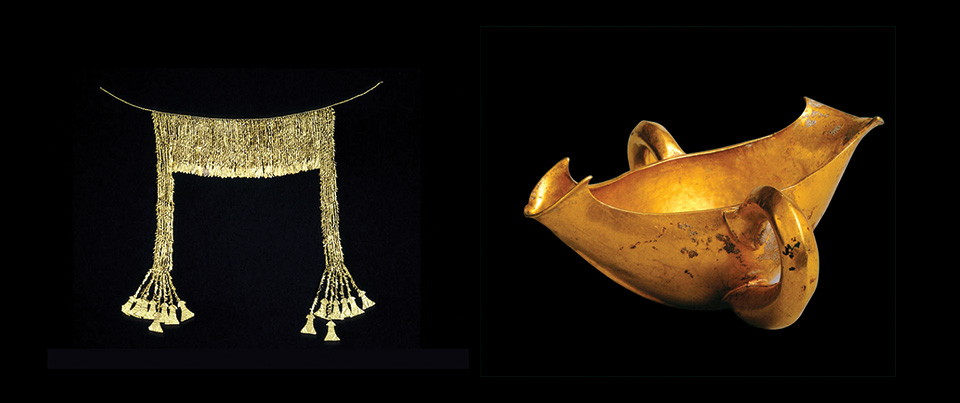
Troy II became a much different settlement than its predecessor, as the city gradually developed into a major commercial center with trade contacts extending from the Aegean to central Asia. Thanks to the influx of new wealth, the city expanded and was about a quarter of the size bigger than Troy I. A major population increase required that a second residential district be established below the hilltop citadel. This “Lower City” was protected by a wooden palisade. This type of dual defensive network was unusual for early Bronze Age settlements and indicates that the community placed a heavy emphasis on security and protection.

Not only were the size and strength of the fortifications increased at this time, but the buildings and houses on Troy’s citadel grew larger and more complex as well. There were also many technological advances such as the introduction of wheel-made pottery. The increase in wealth also seems to have led to the development of different social classes, particularly the formation of an elite upper class. Troy II was the settlement that Heinrich Schliemann believed to be the Homeric city of the Iliad and the Odyssey. Unfortunately, in his determination to expose the legendary city, Schliemann’s workers cut a massive ditch through the site, irreparably destroying much of the archaeology associated with Troy’s later settlements.

One of the reasons that Schliemann connected Troy II with the Trojan War was the extraordinary collection of precious artifacts he found buried in this layer. He called the most famous of these assemblages “Priam’s Treasure,” after the mythical king of the Trojan War. This luxurious cache included gold, electrum, silver, and bronze vessels; bronze daggers and axes; and an assortment of exquisite gold jewelry, including diadems, bracelets, and earrings. These and other treasures, though, date to around 2400 B.C., more than 1,000 years before the supposed events of the Trojan War. Thus, they cannot possibly be associated with any of Homer’s heroes. This prosperous settlement was suddenly destroyed by a fire around 2300 B.C.